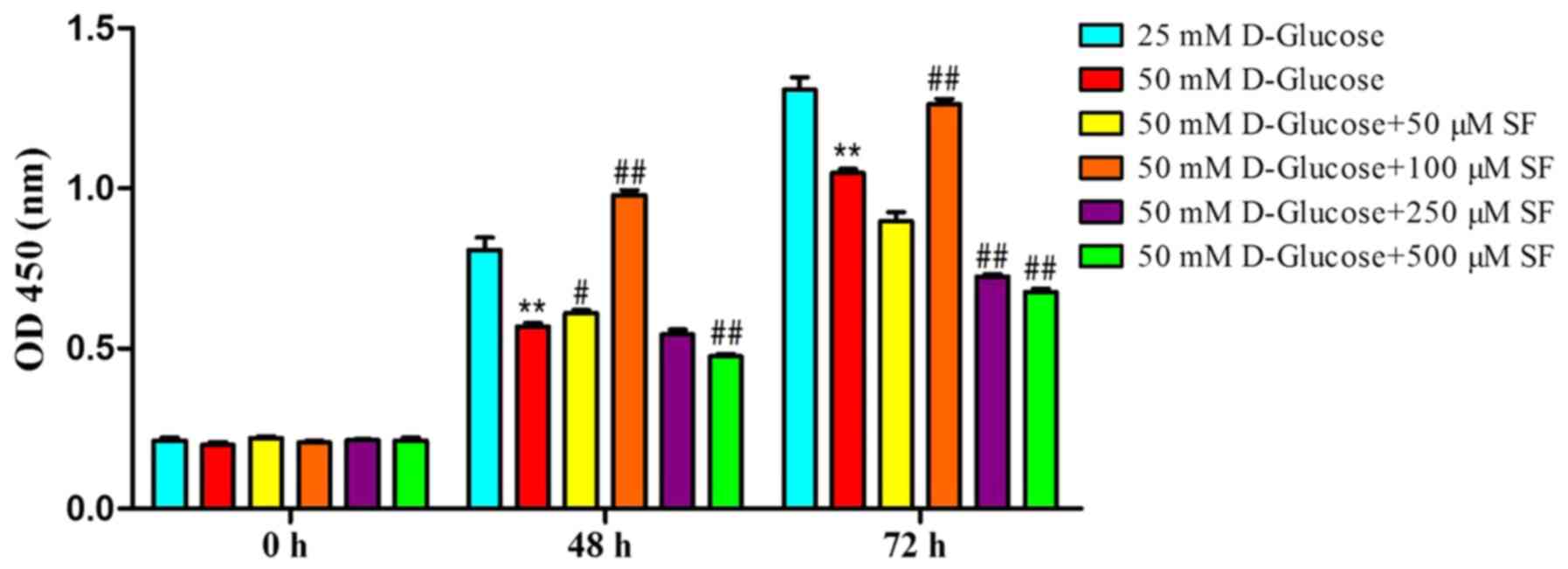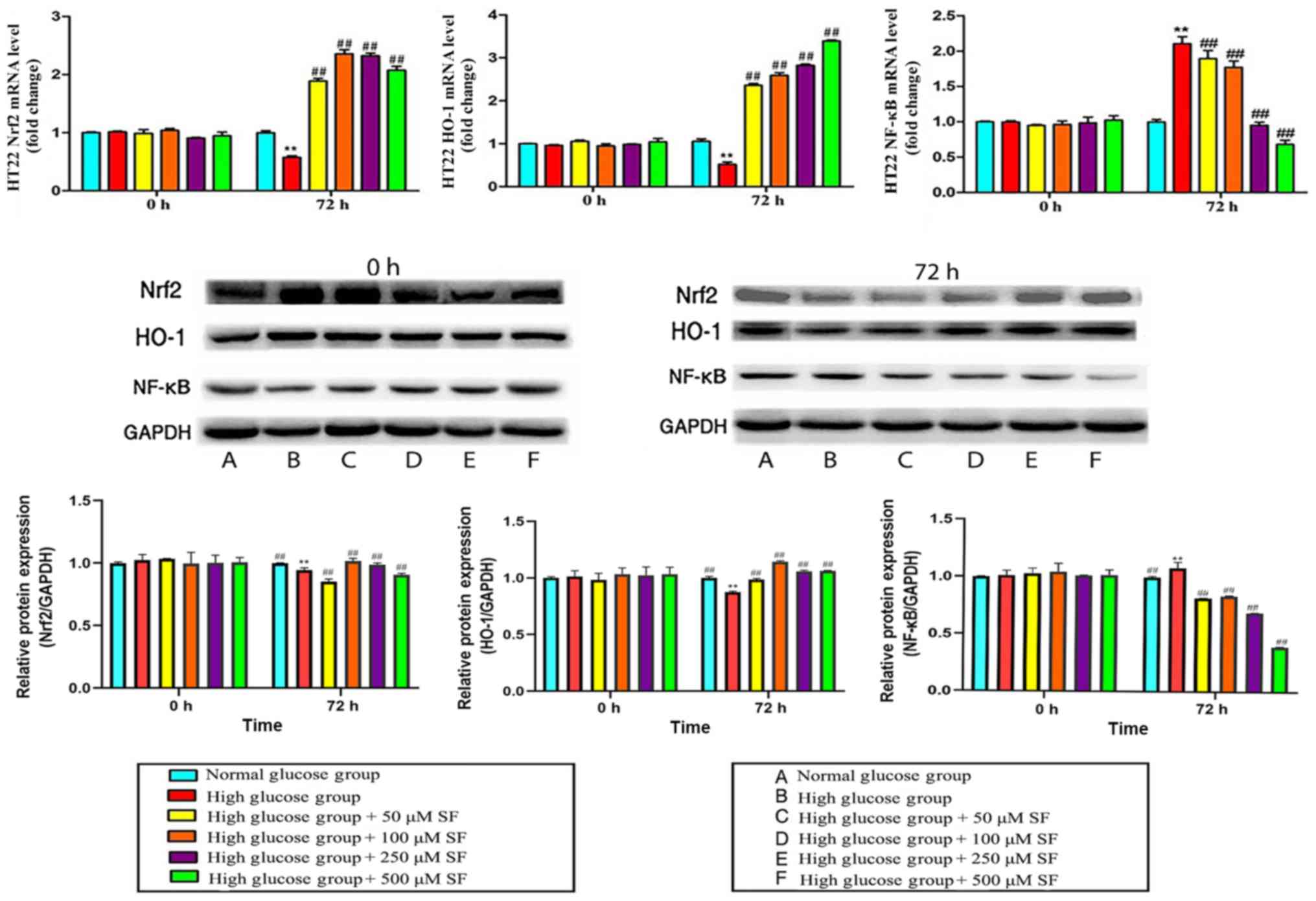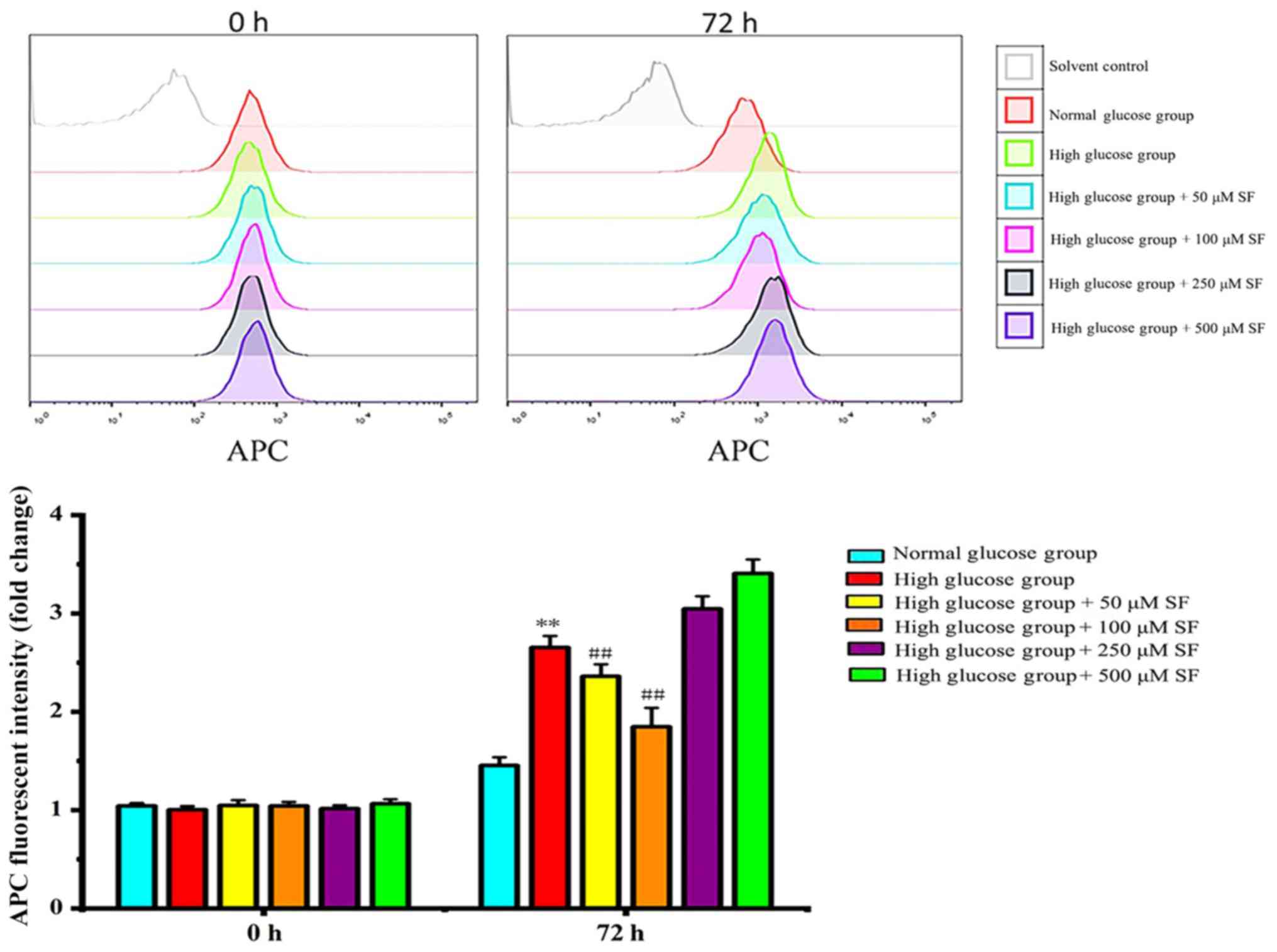|
1
|
Xu WL, von Strauss E, Qiu CX, Winblad B
and Fratiglioni L: Uncontrolled diabetes increases the risk of
Alzheimer's disease: A population-based cohort study. Diabetologia.
52:1031–1039. 2009. View Article : Google Scholar : PubMed/NCBI
|
|
2
|
van Harten B, Oosterman J, Muslimovic D,
van Loon BJ, Scheltens P and Weinstein HC: Cognitive impairment and
MRI correlates in the elderly patients with type 2 diabetes
mellitus. Age Ageing. 36:164–170. 2007. View Article : Google Scholar : PubMed/NCBI
|
|
3
|
Li ZG, Zhang W and Sima AA: Alzheimer-like
changes in rat models of spontaneous diabetes. Diabetes.
56:1817–1824. 2007. View Article : Google Scholar : PubMed/NCBI
|
|
4
|
Alvarez EO, Beauquis J, Revsin Y, Banzan
AM, Roig P, De Nicola AF and Saravia F: Cognitive dysfunction and
hippocampal changes in experimental type 1 diabetes. Behav Brain
Res. 198:224–230. 2009. View Article : Google Scholar : PubMed/NCBI
|
|
5
|
Sima AA: Encephalopathies: The emerging
diabetic complications. Acta Diabetol. 47:279–293. 2010. View Article : Google Scholar : PubMed/NCBI
|
|
6
|
Russell JW, Golovoy D, Vincent AM,
Mahendru P, Olzmann JA, Mentzer A and Feldman EL: High
glucose-induced oxidative stress and mitochondrial dysfunction in
neurons. FASEB J. 16:1738–1748. 2002. View Article : Google Scholar : PubMed/NCBI
|
|
7
|
Kamboj SS and Sandhir R: Protective effect
of N-acetylcysteine supplementation on mitochondrial oxidative
stress and mitochondrial enzymes in cerebral cortex of
streptozotocin-treated diabetic rats. Mitochondrion. 11:214–222.
2011. View Article : Google Scholar : PubMed/NCBI
|
|
8
|
Karkkainen V, Pomeshchik Y Savchenko E,
Dhungana H, Kurronen A, Lehtonen S, Naumenko N, Tavi P, Levonen AL,
Yamamoto M, et al: Nrf2 regulates neurogenesis and protects neural
progenitor cells against Aβ toxicity. Stem Cells. 32:1904–1916.
2014. View Article : Google Scholar : PubMed/NCBI
|
|
9
|
Baird L and Dinkova-Kostova AT: The
cytoprotective role of the Keap1-Nrf2 pathway. Arch Toxicol.
85:241–272. 2011. View Article : Google Scholar : PubMed/NCBI
|
|
10
|
Rojo AI, Pajares M, Rada P, Nuñez A,
Nevado-Holgado AJ, Killik R, Van Leuven F, Ribe E, Lovestone S,
Yamamoto M and Cuadrado A: NRF2 deficiency replicates
transcriptomic changes in Alzheimer's patients and worsens APP and
TAU pathology. Redox Biol. 13:444–451. 2017. View Article : Google Scholar : PubMed/NCBI
|
|
11
|
Kanninen K, Malm TM, Jyrkkänen HK,
Goldsteins G, Keksa-Goldsteine V, Tanila H, Yamamoto M,
Yia-Herttuala S, Levonen AL and Koistinaho J: Nuclear factor
erythroid 2-related factor 2 protects against beta amyloid. Mol
Cell Neurosci. 39:302–313. 2008. View Article : Google Scholar : PubMed/NCBI
|
|
12
|
Wang G, Fang H, Zhen Y, Xu G, Tian J,
Zhang Y, Zhang D, Zhang G, Xu J, Zhang Z, et al: Sulforaphane
prevents neuronal apoptosis and memory impairment in diabetic rats.
Cell Physiol Biochem. 39:901–907. 2016. View Article : Google Scholar : PubMed/NCBI
|
|
13
|
Pu D, Zhao Y, Chen J, Sun Y, Lv A, Zhu S,
Luo C, Zhao K and Xiao Q: Protective effects of sulforaphane on
cognitive impairments and AD-like lesions in diabetic mice are
associated with the upregulation of Nrf2 transcription activity.
Neuroscience. 381:35–45. 2018. View Article : Google Scholar : PubMed/NCBI
|
|
14
|
Ren Z, Zhang R, Li Y, Li Y, Yang Z and
Yang H: Ferulic acid exerts neuroprotective effects against
cerebral ischemia/reperfusion-induced injury via antioxidant and
anti-apoptotic mechanisms in vitro and in vivo. Int J
Mol Med. 40:1444–1456. 2017. View Article : Google Scholar : PubMed/NCBI
|
|
15
|
Mancuso C and Santangelo R: Ferulic acid:
Pharmacological and toxicological aspects. Food Chem Toxicol.
65:185–195. 2014. View Article : Google Scholar : PubMed/NCBI
|
|
16
|
Xu X, Xiao H, Zhao J and Zhao T:
Cardioprotective effect of sodium ferulate in diabetic rats. Int J
Med Sci. 9:291–300. 2012. View Article : Google Scholar : PubMed/NCBI
|
|
17
|
Livak KJ and Schmittgen TD: Analysis of
relative gene expression data using real-time quantitative PCR and
the 2(-Delta Delta C(T)) method. Methods. 25:402–408. 2001.
View Article : Google Scholar : PubMed/NCBI
|
|
18
|
Ward R and Ergul A: Relationship of
endothelin-1 and NLRP3 inflammasome activation in HT22 hippocampal
cells in diabetes. Life Sci. 159:97–103. 2016. View Article : Google Scholar : PubMed/NCBI
|
|
19
|
Rolo AP and Palmeira CM: Diabetes and
mitochondrial function: Role of hyperglycemia and oxidative stress.
Toxicol Appl Pharm. 212:167–178. 2006. View Article : Google Scholar
|
|
20
|
Kikugawa M, Tsutsuki H, Ida T, Nakajima H,
Ihara H and Sakamoto T: Water-soluble ferulic acid derivatives
improve amyloid-beta-induced neuronal cell death and dysmnesia
through inhibition of amyloid-β aggregation. Biosci Biotechnol
Biochem. 80:547–553. 2016. View Article : Google Scholar : PubMed/NCBI
|
|
21
|
Kanski J, Aksenova M, Stoyanova A and
Butterfield DA: Ferulic acid antioxidant protection against
hydroxyl and peroxyl radical oxidation in synaptosomal and neuronal
cell culture systems in vitro: Structure-activity studies. J Nutr
Biochem. 13:273–281. 2002. View Article : Google Scholar : PubMed/NCBI
|
|
22
|
Jiang X, Lin Q, He G, Hou X, Shan Z and Du
Y: Therapeutic effect of QQL prescription on type 2 diabetic rats.
Chin J Pathophysiol. 33:1794–1800. 2017.
|
|
23
|
de Vries HE, Witte M, Hondius D,
Rozemuller AJ, Drukarch B, Hoozemans J and van Horssen J:
Nrf2-induced antioxidant protection: A promising target to
counteract ROS-mediated damage in neurodegenerative disease? Free
Radic Biol Med. 45:1375–1383. 2008. View Article : Google Scholar : PubMed/NCBI
|
|
24
|
Ma ZC, Hong Q, Wang YG, Liang QD, Tan HL,
Xiao CR, Tang XL, Shao S, Zhou SS and Gao Y: Ferulic acid induces
heme oxygenase-1 via activation of ERK and Nrf2. Drug Discov Ther.
5:299–305. 2011. View Article : Google Scholar : PubMed/NCBI
|
|
25
|
Catino S, Paciello F, Miceli F, Rolesi R,
Troiani D, Calabrese V, Santangelo R and Mancuso C: Ferulic acid
regulates the Nrf2/Heme oxygenase-1 system and counteracts
trimethyltin-induced neuronal damage in the human neuroblastoma
cell line SH-SY5Y. Front Pharmacol. 6:3052015.PubMed/NCBI
|
|
26
|
Scapagnini G, Butterfield DA, Colombrita
C, Sultana R, Pascale A and Calabrese V: Ethyl ferulate, a
lipophilic polyphenol, induces HO-1 and protects rat neurons
against oxidative stress. Antioxid Redox Signal. 6:811–818. 2004.
View Article : Google Scholar : PubMed/NCBI
|
|
27
|
Mezzasoma L, Antognelli C and Talesa VN: A
novel role for brain natriuretic peptide: Inhibition of IL-1β
secretion via downregulation of NF-kB/Erk 1/2 and
NALP3/ASC/Caspase-1 activation in human THP-1 monocyte. Mediators
Inflamm. 2017:58583152017. View Article : Google Scholar : PubMed/NCBI
|
|
28
|
Wang B, Miao Y, Zhao Z and Zhong Y:
Inflammatory macrophages promotes development of diabetic
encephalopathy. Cell Physiol Biochem. 36:1142–1150. 2015.
View Article : Google Scholar : PubMed/NCBI
|
|
29
|
Aragno M, Mastrocola R, Brignardello E,
Catalano M, Robino G, Manti R, Parola M, Danni O and Boccuzzi G:
Dehydroepiandrosterone modulates nuclear factor-kappaB activation
in hippocampus of diabetic rats. Endocrinology. 143:3250–3258.
2002. View Article : Google Scholar : PubMed/NCBI
|
|
30
|
Zhang H, Li Y and An Y: Effect of sodium
ferulate on NF-κB P65 and Par-4 expression of apoptotic hippocampal
neurons induced by SNP. Chin J Gerontol. 28:1361–1364. 2008.(In
Chinese).
|
|
31
|
Jin Y, Yan EZ, Li XM, Fan Y, Zhao YJ, Liu
Z and Liu WZ: Neuroprotective effect of sodium ferulate and signal
transduction mechanisms in the aged rat hippocampus. Acta Pharmacol
Sin. 29:1399–1408. 2008. View Article : Google Scholar : PubMed/NCBI
|

















